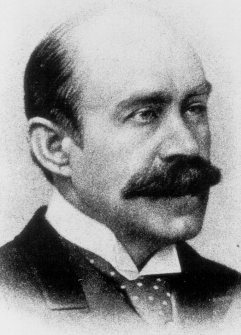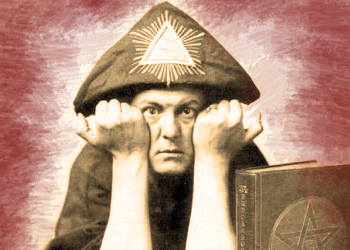First, to be comparatively small. Secondly, to be smooth. Thirdly, to have a variety in the direction of the parts; but fourthly, to have those parts not angular, but melted as it were into each other. Fifthly, to be of a delicate frame, without any remarkable appearance of strength. Sixthly, to have its colours clear and bright; but not very strong and glaring. Seventhly, or if it should have any glaring colour, to have it diversified with others.
Edmund Burke, A Philosophical Enquiry into the Origin of Our Ideas of the Sublime and Beautiful (1757)
First, it was small. In fact it was tiny. And I made it seem even tinier than it actually was by placing it next to some pretty big things. If I had surrounded it with, say, lemons or pin-cushions, it would still have been tiny but it would hold its own, as it were, among such fruit ‘n’ cloth. So in order to emphasise, even to exaggerate, its tininess, I swept away all the scattered lemons and pin-cushions and in their place I put a couple of life-size papier maché models of cows and an industrial washing machine. I could of course have left the lemons and pin-cushions where they were, and simply removed the tiny thing and found a new home for it. That would have saved time. But I had time on my hands, since the fall of the regime. Also, I could now squeeze all the lemons and stick pins in all the pin-cushions, in other words, make use of them, instead of leaving them scattered about, pointlessly. Heaving the papier maché cows and the washing machine into place took the wind out of me, so I went to have a lie down. I turned the volume down on the radio, which was playing stirring and patriotic anthems, and I dozed.
Secondly, it was smooth. It was not smooth to begin with, but when I woke from my nap I fetched some sandpaper from my sandpaper-crammed desk drawer and rubbed away at the thing, smoothing all the rough edges. Offhand, I cannot recall what grade of sandpaper I used, but I made a note of it at the time, in my jotter, with my propelling-pencil, in case it ever cropped up as a matter of concern during an interrogation. But it never did, and eventually I cast the jotter into a furnace. I suspect I shall regret having done so, one of these days, but not yet, not yet, fingers crossed.
Thirdly, it had variety in the direction of the parts. Some parts of it pointed one way, some another, and some in still other directions. That makes it sound complicated, but it wasn’t. And to say the parts “pointed” might suggest they were pointy parts, but they weren’t, at least not after I had sanded them down with the grade [whatever] sandpaper. I say they “pointed” in a direction when I suppose what I ought more correctly say is that the different parts “faced” in different directions, or that, depending on where you were when you cast your eyes upon it, you would see different aspects of it. Much like any other solid object, really, in this solid world.
Fourthly, on that mistaken idea of pointiness, I should stress that not only was it not at all pointy but that its various parts looked as if they were melted into each other. This is hardly surprising. After my nap, and my bout of sandpapering, I fetched a blowtorch from the janitor’s cupboard and lit it and aimed it at the tiny thing. The heat was terrific, much as I believe in my heart of hearts the fires of hell to be, and it took less than a minute for parts of the thing to melt pleasingly into one another. Unfortunately, my blowtorch technique was somewhat slapdash, and I inadvertently set fire to one of the papier maché cows. The resulting blaze brought a goon squad galumphing through my door, but fortunately my papers were in order. I have to acknowledge their help in extinguishing the cow before it was too badly damaged.
Fifthly, it was very delicate, particularly after all that sanding and blasting with a blowtorch. In fact I became worried that it would fall to bits. That is why I put the industrial washing machine between it and the window where the draught gets in. Even a mild sudden gust might shatter it, it was so delicate! I resolved to obtain one of those draught excluder sausages when next I had the necessary coupons and pass. I suppose I could have run one up myself, possibly by stitching all the pin-cushions end to end to form a sausage, but quite frankly the prospect unnerved me. I am too timid to risk illegal needlework under the current regime.
Sixthly, its colours were clear and bright without being strong and glaring. Initially it was a sort of dull dun beige, but after my nap and the sanding and the blasting with a blowtorch and the visit from the goon squad and the extinguishing of the papier maché cow I gave it a lick of paint. A dab of yellow and a dab of red and a sort of wash of lilac or lavender. The colours had a very pleasing effect. Because it was such a tiny thing I used a very small paintbrush, and painted with care. After the hullabaloo with the blowtorch, I did not want to risk splattering paint all over the place, over the cows and the industrial washing machine. So I devoted several hours to that, until the pips on the radio indicated it was time for the night rally in the field behind the viaduct.
Seventhly, because the red and yellow dabs stood out in a vaguely glaring way from the overall lilac or lavender wash, I got a damp cloth from the janitor’s cupboard and smudged them a bit, so the colours sort of shaded one into another. But that had to wait until I got home from the night rally, dog tired and hoarse from shouting my undying hatred of the previous regime.
It was only after reading Edmund Burke I realised that there, between the papier maché cows and the industrial washing machine, I had a tiny [illegible] of unsurpassed beauty. I pray that it will not be confiscated by the peasant army.


